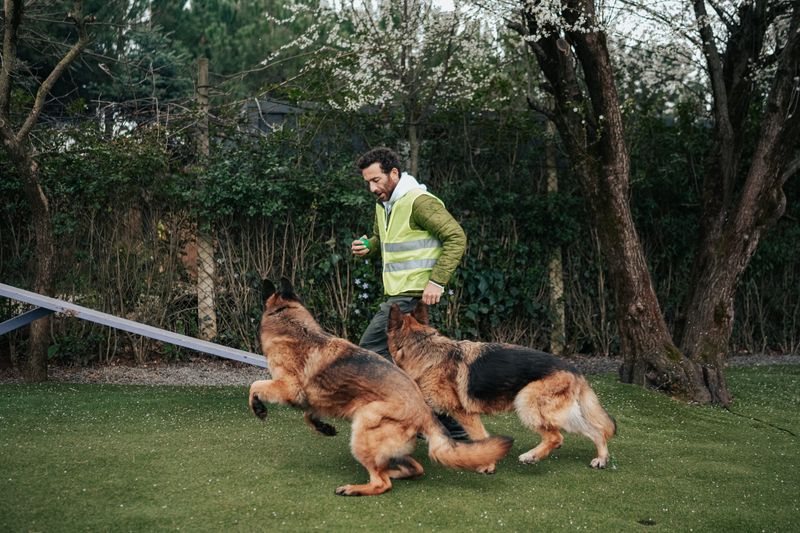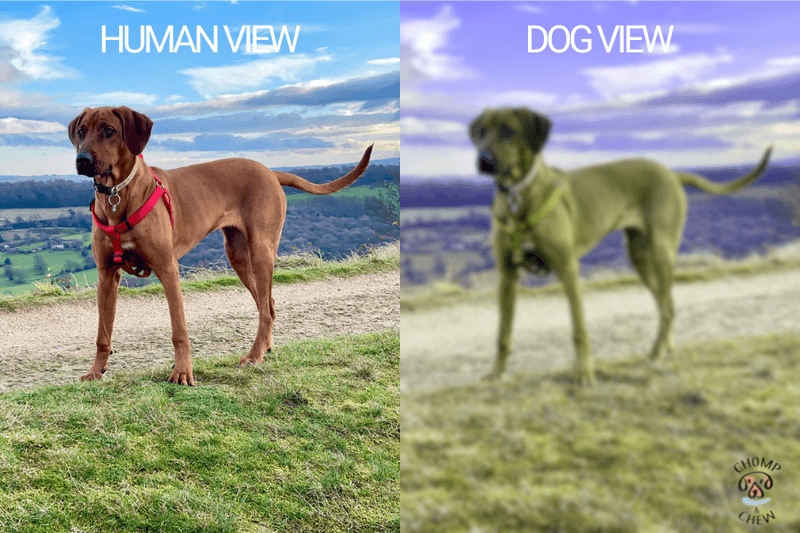Dogs are often surrounded by myths that mislead even the most loving owners. In this blog post, we will demystify 12 common misconceptions about dogs and reveal 12 truths every dog lover should know. Through engaging anecdotes and thoughtful insights, we aim to enrich your understanding of these loyal companions. Whether you’re a new dog parent or a seasoned owner, this guide will offer valuable perspectives and practical advice. Let’s explore the world of dogs with curiosity and joy, embracing both the myths and the truths that define our furry friends.
Myth 1: Dogs Eat Grass When They’re Sick
A common belief is that dogs eat grass to induce vomiting when they’re feeling unwell. However, studies suggest that most dogs munch on grass simply because they enjoy it or find it appealing. Grass-eating is normal behavior and not necessarily a sign of illness. Occasionally, a dog may vomit after eating grass, but this is not the primary purpose of the behavior. Instead, it may be part of their instinctual foraging habits. So next time you catch your furry friend snacking on some greens, don’t worry too much—it’s likely just part of their curious nature!
Truth 1: Dogs Have Unique Personalities
Dogs, like humans, have distinct personalities that can vary widely even within the same breed. Some are playful and energetic, while others may be calm and reserved. These personality traits often influence their behavior and interactions with their environment. Understanding your dog’s personality can enhance your relationship, allowing you to cater to their specific needs and preferences. It’s fascinating how each dog’s personality shapes their experiences and relationships. Recognizing and appreciating these differences can make you a more attentive and empathetic pet owner, ensuring a fulfilling companionship.
Myth 2: A Wagging Tail Means a Happy Dog
Many assume that a wagging tail is a universal sign of happiness in dogs, but this isn’t always the case. Tail wagging can indicate various emotions, including excitement, anxiety, or even aggression. The position and speed of the wag also matter. A high, fast wag may signal excitement, while a low, slow wag could indicate uncertainty or nervousness. By observing the context and other body language signals, you can better understand what your dog is trying to communicate. Understanding the nuances of tail wagging can enhance your ability to interpret your dog’s emotions accurately.
Truth 2: Dogs Have Exceptional Senses
Dogs are renowned for their extraordinary senses of smell and hearing, far surpassing human abilities. Their sense of smell is thousands of times more sensitive, allowing them to detect scents we cannot perceive. This exceptional olfactory skill is why dogs are employed in roles like search and rescue, drug detection, and tracking. Their acute hearing also enables them to pick up sounds beyond human frequency range. These remarkable senses make dogs incredible companions, helping them navigate the world and providing unique opportunities for bonding and interaction with their human friends.
Myth 3: You Can’t Teach an Old Dog New Tricks
The adage “You can’t teach an old dog new tricks” suggests that older dogs are set in their ways and unable to learn new behaviors. However, this is far from the truth. Dogs of any age can learn new tricks and commands with patience, consistency, and positive reinforcement. Older dogs may take a bit longer to grasp new concepts, but their ability to learn and adapt remains strong. Training can be a delightful way to strengthen your bond and keep your older dog’s mind active and engaged, proving that age is just a number when it comes to learning.
Truth 3: Dogs Thrive on Routine
Dogs are creatures of habit, and having a consistent routine can provide them with a sense of security and stability. Regular feeding times, walks, and play sessions help dogs understand what to expect and reduce anxiety. Routines can be particularly beneficial for dogs with behavioral issues, providing a structured environment that aids in training. While flexibility is important, maintaining a basic daily schedule can enhance your dog’s happiness and well-being. Embracing a routine doesn’t mean a lack of spontaneity but rather a foundation for a harmonious life with your furry friend.
Myth 4: Dogs Only See in Black and White
It’s a common misconception that dogs see the world in black and white. In reality, dogs can perceive colors, although not as vividly as humans. Dogs primarily see in shades of blue and yellow, lacking the ability to see red and green. This limited color vision doesn’t hinder their ability to interact with their environment. Understanding a dog’s visual perspective can help in selecting toys and creating engaging environments. Knowing that dogs do perceive colors adds depth to our understanding of their interactions and enriches our appreciation of their world.
Truth 4: Dogs Communicate Through Body Language
Dogs primarily communicate through body language, using their tails, ears, eyes, and posture to express emotions and intentions. Understanding these signals can enhance your ability to respond to your dog’s needs and emotions. For example, a relaxed body and wagging tail might indicate contentment, while a stiff posture and raised hackles could signal aggression or fear. By paying attention to these cues, you can foster a deeper connection with your dog, promoting mutual understanding and enhancing the bond you share. This silent language speaks volumes about their feelings and thoughts.
Myth 5: Dogs Eat People Food
Many believe that sharing “people food” with dogs is harmless or even beneficial. However, some human foods can be toxic to dogs, including chocolate, grapes, and onions. Feeding table scraps can also lead to obesity and nutritional imbalances. It’s essential to provide a balanced diet tailored to your dog’s specific needs. While the occasional treat may not harm, it’s crucial to understand which foods are safe and to avoid unhealthy habits. Educating yourself about proper canine nutrition ensures your furry friend’s health and well-being, keeping them happy and active.
Truth 5: Dogs Form Strong Social Bonds
Dogs are highly social animals that thrive on companionship and connection with humans and other animals. They form deep bonds that can be as complex and rewarding as human relationships. This strong social nature makes them excellent companions, providing emotional support and joy. The bonds they form can be seen in their loyalty and affection, often leading to lifelong friendships. Nurturing these connections involves spending quality time together, engaging in activities, and understanding your dog’s unique personality and needs. This mutual bond enriches both human and canine lives.
Myth 6: Dogs Are Colorblind
The myth that dogs are completely colorblind is widespread, but it’s not accurate. While dogs have a limited color spectrum compared to humans, they can see shades of blue and yellow. Their vision is similar to a human with red-green color blindness, missing the ability to distinguish between red and green hues. Despite this, their keen sense of smell and motion detection compensate for any visual limitations. Understanding how dogs perceive color can enhance your interactions with them, allowing you to choose toys and environments that align with their visual abilities.
Truth 6: Dogs Need Mental Stimulation
Dogs, like people, require mental stimulation to stay happy and healthy. Engaging their minds through puzzle toys, training sessions, or interactive play can prevent boredom and destructive behaviors. Mental exercises challenge their problem-solving skills, keeping their minds sharp and active. These activities also provide an excellent opportunity for bonding and building trust between you and your dog. By incorporating mental stimulation into your dog’s routine, you’re enhancing their overall quality of life, ensuring they remain curious and content. It’s a fun and rewarding way to spend time together, strengthening your relationship.
Myth 7: Dogs Age in “Dog Years”
The notion of “dog years”—that one human year equals seven dog years—is a simplification that doesn’t accurately reflect canine aging. Different breeds and sizes age at varying rates, with larger breeds often aging faster than smaller ones. Understanding your dog’s specific aging process helps with healthcare and lifestyle adjustments. Regular veterinary check-ups and tailored care ensure your dog’s well-being as they age. Recognizing that dogs age individually, rather than uniformly, allows for a more personalized approach to their care, ensuring a happy and healthy life throughout their golden years.
Truth 7: Dogs Are Natural Explorers
Dogs possess an innate curiosity that drives them to explore their surroundings, using their keen senses to investigate new sights and smells. This exploratory nature is a vital aspect of their well-being, providing mental and physical stimulation. Allowing your dog to explore within safe boundaries enhances their happiness and enriches their experiences. Whether through walks, hikes, or playtime in the yard, exploration satisfies their instincts and fosters confidence. Embracing this adventurous spirit strengthens your bond and provides insight into their joyful way of viewing the world, filled with endless possibilities.
Myth 8: All Dogs Are Great Swimmers
While some breeds like Retrievers take to water naturally, not all dogs are proficient swimmers. Some may lack the physical traits or confidence needed to swim effectively. Just as humans have varying levels of comfort with water, dogs do too. Introducing your dog to water gradually and with support can build their confidence and swimming ability. Providing a safe environment and never forcing them into water ensures a positive experience. Understanding your dog’s individual comfort level with swimming allows for enjoyable and stress-free water activities.
Truth 8: Dogs Can Understand Human Emotions
Dogs are incredibly attuned to human emotions, often sensing when their owner is sad, happy, or stressed. Their ability to read emotional cues makes them empathetic companions, providing comfort and support when needed. This emotional intelligence is why dogs are often used in therapy settings, offering solace and understanding. Recognizing and respecting these emotional connections enriches the human-dog relationship, fostering trust and companionship. By engaging with your dog emotionally, you strengthen the bond, creating a supportive environment where both you and your furry friend thrive together.
Myth 9: Dogs That Growl Are Always Aggressive
Growling is often misunderstood as a sign of aggression, but it can also indicate playfulness, discomfort, or fear. Context and body language are essential to interpreting a growl’s true meaning. A playful growl during a game of tug-of-war differs from an aggressive growl when a dog feels threatened. Recognizing these distinctions helps in addressing any underlying issues. By observing your dog’s behavior and environment, you can respond appropriately, ensuring safety and understanding. Growling is a form of communication, and listening carefully can strengthen your relationship with your dog.
Truth 9: Dogs Need Exercise
Exercise is crucial for a dog’s physical and mental well-being. Regular activity helps maintain a healthy weight, strengthens muscles, and prevents boredom-related behaviors. Different breeds have varying exercise needs, so it’s important to tailor activities to your dog’s specific requirements. Whether through walks, playtime, or agility training, exercise keeps your dog happy and engaged. Building a routine that includes physical activity benefits both you and your dog, promoting a healthier lifestyle and deepening your connection. Embracing an active lifestyle ensures a joyful and fulfilling life together.
Myth 10: Dogs Are Only Loyal to One Person
The belief that dogs are loyal to only one person is a myth. While some dogs may form a stronger bond with one individual, they can show loyalty and affection to multiple people within a family. Dogs are social animals that thrive on interaction and companionship. Their loyalty extends to those who care for and engage with them regularly. By fostering a relationship with each family member, dogs can become loving companions to all. Understanding this aspect of canine loyalty enhances family dynamics, ensuring that everyone enjoys a meaningful connection with their furry friend.
Truth 10: Dogs Can Learn Emotions
Dogs are capable of learning to mimic human emotions through observation and interaction. This ability enhances their social compatibility, allowing them to mirror their owner’s feelings and respond appropriately. Through daily interactions, dogs pick up on emotional cues, developing behaviors that align with human emotions. This empathetic understanding deepens the bond between dog and owner, fostering a harmonious relationship. Recognizing this emotional mirroring helps owners support their dogs’ emotional growth, creating a nurturing environment where both thrive. Dogs’ ability to learn emotions is a testament to their intelligence and sensitivity.
Myth 11: Small Dogs Are Easier to Care For
The perception that small dogs are easier to care for is misleading. While they may require less space, small dogs often need just as much attention, training, and care as larger breeds. Their energy levels and personalities can be surprisingly demanding, and they may require specific grooming or health considerations. Recognizing these needs ensures that small dogs receive the proper care and attention they deserve. Approaching small dog care with the same diligence as larger breeds fosters a fulfilling and healthy relationship, debunking the myth that size dictates ease of care.
Truth 11: Dogs Can Detect Changes in Health
Dogs possess an extraordinary ability to detect changes in human health, often sensing illnesses before they manifest symptoms. This intuitive capability is attributed to their keen senses of smell and observation. Dogs have been known to alert owners to conditions like diabetes, seizures, and even cancer. Their sensitivity to changes in body chemistry and behavior makes them invaluable companions in monitoring health. Embracing this instinctive support deepens the connection between humans and dogs, highlighting the profound impact they have on our lives. Dogs’ health detection abilities are both fascinating and life-enhancing.
Myth 12: Dogs Don’t Need Dental Care
It’s a misconception that dogs don’t require dental care, leading many owners to neglect their furry friends’ oral hygiene. Regular dental care is crucial to prevent plaque, tartar buildup, and gum disease. Brushing your dog’s teeth and providing dental chews can maintain oral health, preventing more serious health issues. Veterinary dental check-ups further ensure that your dog’s teeth and gums remain healthy. Understanding the importance of dental care contributes to your dog’s overall well-being, ensuring a long and healthy life. Oral health is an integral part of comprehensive canine care.
Truth 12: Dogs Are Sensitive to Routine Changes
Dogs often thrive on routine, and sudden changes can lead to stress and confusion. Understanding their sensitivity to these changes helps in creating a stable and supportive environment. Gradual introductions to new routines or environments can ease transitions, promoting confidence and well-being. Recognizing the impact of routine changes allows for thoughtful adjustments, ensuring your dog’s happiness and comfort. By being mindful of their needs, you can foster a harmonious relationship that respects their natural inclinations, nurturing a joyful and balanced life together. Sensitivity to routine is a testament to their emotional depth.
























